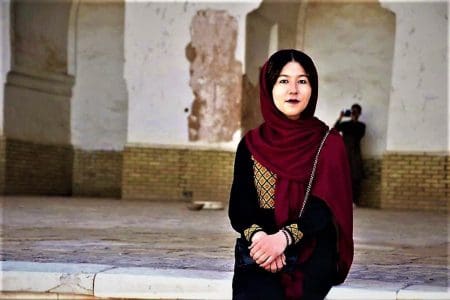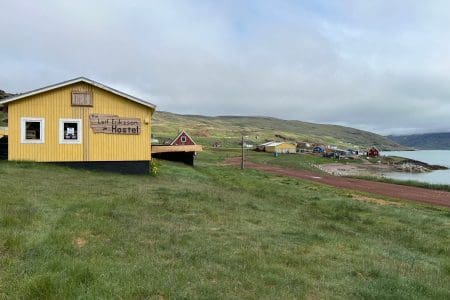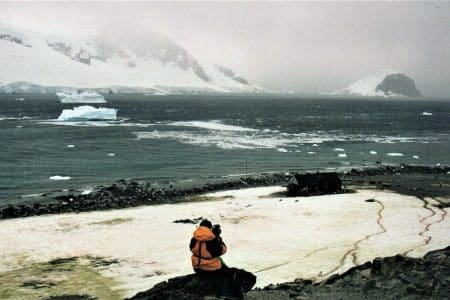Last November, Elise Wortley set out into the Indian Himalaya, following in the footsteps of legendary female explorer Alexandra David-Neél, who crossed the Himalayas to Lhasa in 1924. Elise went without modern day equipment to raise money for the charity Freedom Kit Bags. To mark International Women’s Day 2018, Mark Bibby Jackson talked with the modern-day female explorer about her trip.
What was the motivation for the trip?
I’ve always been mesmerised by Alexandra David-Neél, since I first read her book My Journey to Lhasa when I was 16. I could never get her story, and what she managed to achieve out of my head. She must have had so much strength, physically and mentally to journey through Asia for 14 years, but more so to walk away from her life in Europe. Women just didn’t do that sort of thing in the early 1900s, they stayed at home and had children, which makes her story even more unusual and inspiring to me.
I craved for life beyond the garden gate, to follow the road that passed it by, and to set out for the unknown
From reading her books, it seemed to me like Alexandra was bored of the life she was supposed to have; the one that was “normal” for a woman of her time. She has a great quote that’s always stuck with me, “I craved for life beyond the garden gate, to follow the road that passed it by, and to set out for the unknown”.
I always look up to women who achieve amazing things through their own sheer determination and will power, it makes me think if she can do it, then so can I, and so can anyone.
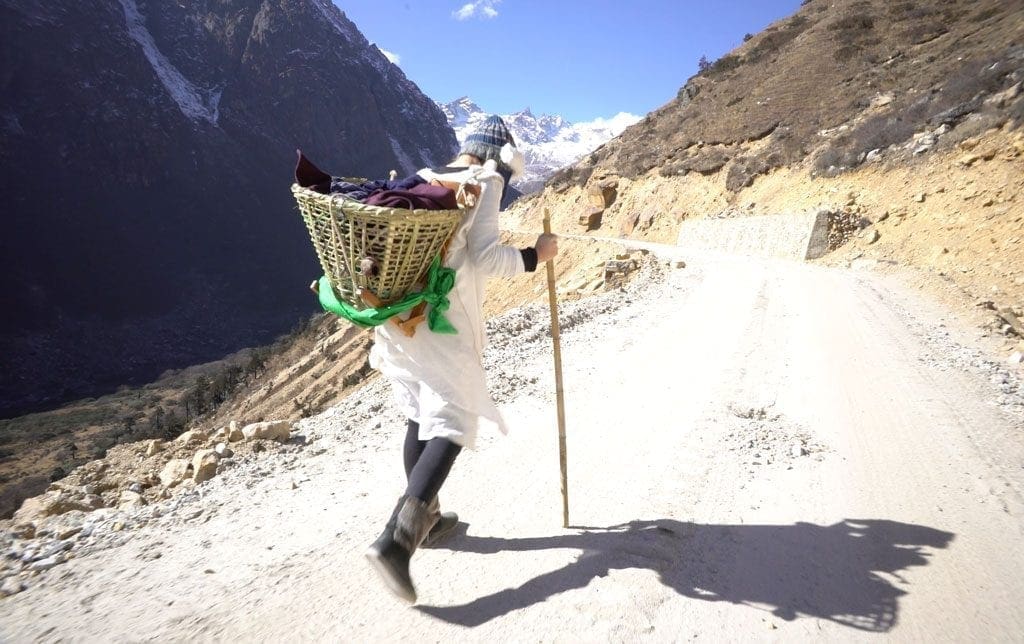
Why an all‐female expedition?
One of my main motivations to do this expedition was to highlight roles of women in adventure travel. I also wanted a focus on female guides around the world as well as trying to inspire as many other women as I can to put themselves out of their comfort zones and take on a challenge, whatever that may be to them. This is why it was really important for me to keep the team female where I could.
The interesting thing is that I was told by numerous people that I would never find a female guide in northern India. After a huge search I managed to find a local leader called Jangu, who couldn’t have been more amazing, and was an absolute inspiration to be around.
I was also joined by an incredible cinematographer, Emily Almond-Barr, who documented the journey. Emily runs her own production company with the main aim of getting more women onto film sets, and her attitude and approach to her work was inspirational.
For another female explorer of a different type, follow Emma Levine and her Albania Travel off the Rails.
I don’t think I would have coped anywhere near as well if I didn’t have these two remarkable women there to support me. Women have an instinct about what each other’s needs, so when I needed a helping hand, a laugh or advice, Emily and Jangu were there for me. We formed such a strong bond that you could only get from adventuring with other women, and it made me realise how important it is for us women to stick together and support each other rather than compete.
I have to mention that we weren’t an entirely female team. It proved impossible to find female porters in India. Unfortunately, it’s just not a job that’s socially acceptable for women to do, so we were also joined by seven local boys from Lachen, who helped us carry food, equipment and my spare emergency clothes. After their initial shyness at these three mad looking women, they became the life and sole of the trip.
Why did you choose Freedom Kit Bags as the designated charity?
Freedom Kit Bags is an amazing charity that empowers women and girls in rural and low-income areas of Nepal by providing them with a reusable kit containing everything they will need during their period. Exodus Travels who I work for, have been supporting Freedom Kit Bags for a while, and I’ve wanted to help in some way since I first heard about the work they do.
Periods are still such a taboo subject even here even in the UK, which is pretty unbelievable, and it really needs to change
I personally couldn’t believe that some women and girls don’t even have a pair of knickers as a starting point. It’s just not possible to live normally during your period if you don’t even have pants. I think any woman can imagine how impossible life would be without access to sanitary items and I just can’t get my head around why it is still this way today.
The other great thing about these kits is that unlike disposable sanitary items, they are environmentally friendly, so the natural environment is safe too. Periods are still such a taboo subject even here even in the UK, which is pretty unbelievable, and it really needs to change. It’s important that we all, women and men, talk more openly about these topics and make it part of everyday conversation.
Is it a taboo in Nepal too?
Due to cultural practises that go back centuries, women and girls are seen as “unclean” during menstruation. One of the main reasons for this is the inability to deal with the physical effects of periods. This results in them not being able to continue life as they normally would, which in many cases for young girls means not being able to go to school for a whole week every month. A lack of hygienic protection also means that many village women suffer from infections which then lead to other health issues such as infertility, kidney complications and pelvic infections.
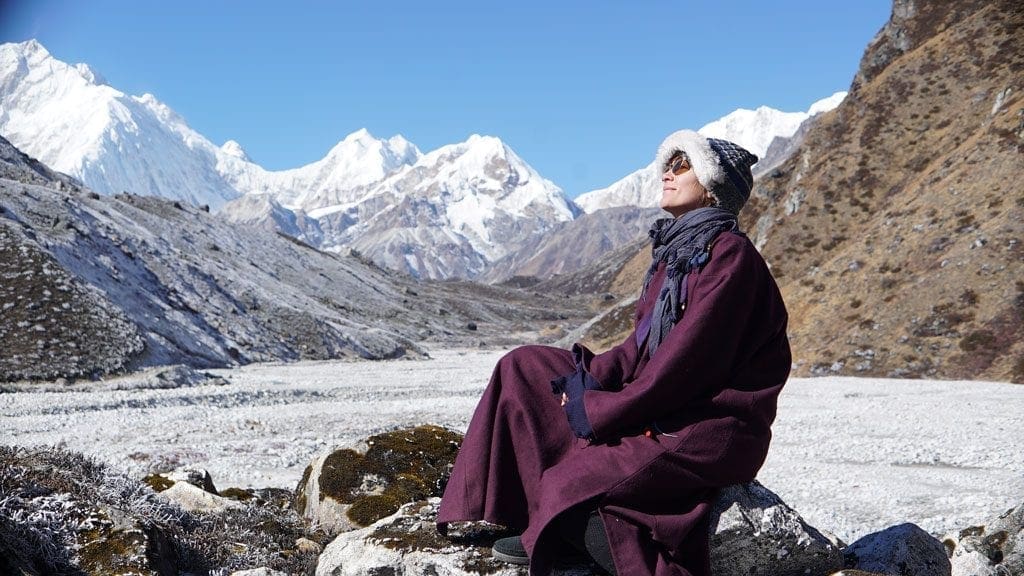
How is the perspective of being a female explorer in adventure travel changing?
It’s changing in a huge way. All-female group trip demand is on the rise and I think it’s due to movements such as This Girl Can, showing that women are demanding more adventure and want to be in this space as much as their male counterparts. The traditional “girly holiday” is definitely a thing of old now. Women still face a lot of pressures while travelling, just as Alexandra would have done, such as where you can and can’t go as a woman, what you should be wearing, how you deal with your period – the list is endless, but we are pushing through those boundaries and women should never be deterred because of a worry about these issues.
No female explorer of the past or present is ever remembered or thought of as much as their male counterparts. For example, which female explorer or adventurer did you learn about at school? And what adventurers can you name who are on TV at the moment? It’s important to show that women currently are, and always have been, at the forefront of travel and exploration, breaking boundaries and most importantly inspiring other women as they go.
What was the stand out moment from the trip?
One of the main challenges I faced before heading off on this trip was finding a female guide in northern India. I had my heart set on it, but as soon as I started searching I knew I had a huge job on my hands. This is why my most memorable moment would be reaching the basecamp of Mount Kangchenjunga, the third highest mountain on the planet, with Jangu, the local female guide I eventually found, and, of course, Emily who was filming the trip.
Check out the video of Elise’s epic journey on You Tube.
It was a special moment for me, reaching the highest and most beautiful part of our trek after a tough few days of walking, but I had no idea just how important this place was for Jangu. We were as close to Mount Kangchenjunga as you can get from the Sikkim side, and it’s very rare that local people get to come here due to the permits, cost and the amount of time it takes to get there.
Mount Kangchenjunga is a sacred mountain for the people of Sikkim, it’s seen as the mother deity. We stopped as close as we could and when I looked at Jangu she was changing into her traditional clothes to recite a prayer for her late father.
It was incredibly moving for all of us because we knew each other so well by this point, a kind of friendship you can only really feel when you’ve had experiences like this together, and understood how much Jangu missed her father, and what an important role he had played in her life. Leaving a prayer for him here was one of the greatest respects she could pay to him and something she never thought she would be able to do, so you can understand just how significant this moment was.
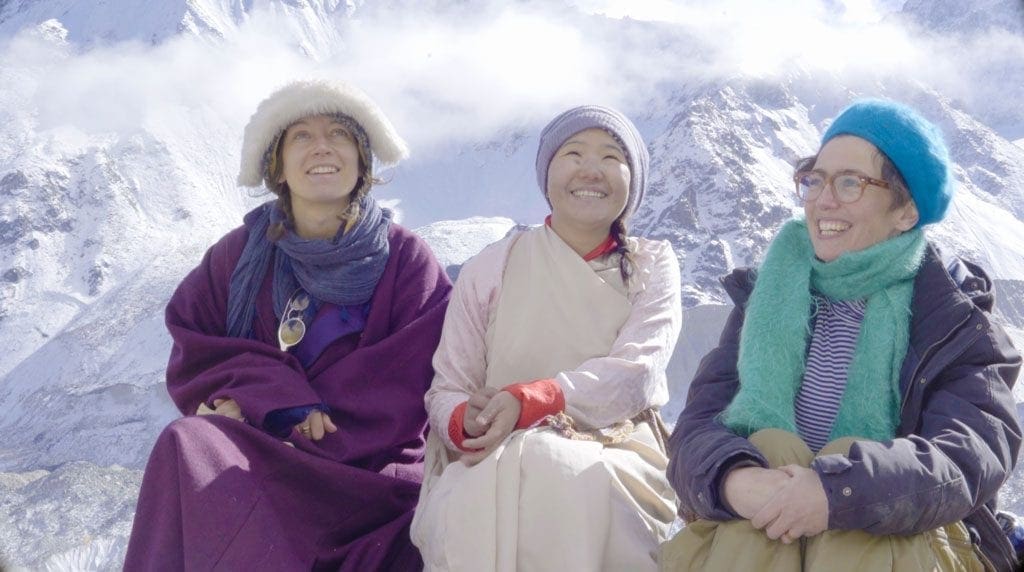
What advice would she give to other women thinking about making a similar trip?
I had the beginnings of this idea when I was a teenager but never did anything about it. I’ve always been an anxious person, so it was probably a combination of not having the confidence to take it on and the devil on my shoulder telling me it was a ridiculous idea. I couldn’t picture it all physically coming together and actually going to India wearing clothes from the 1920s.
No matter how silly you think an idea is, or how unreasonable it may seem, just go with it
This experience has taught me that no matter how silly you think an idea is, or how unreasonable it may seem, just go with it. My whole life I’ve worried about what other people think, which has been a huge barrier for me in many aspects of my life. Even though I often still think this way, this project has made me realise that the opinions of others should never discourage you from following an adventure or dream.
If you’re nervous about travelling alone, or going somewhere for the first time, just grab some friends and take them with you. You will have the best experience together, while at the same time encouraging each other to push your boundaries. A huge amount of women also travel solo for many different reasons, so you can always join an all-female departure where the same applies – you will make some friends for life while learning and pushing each other in a way you only can on a trip like mine.
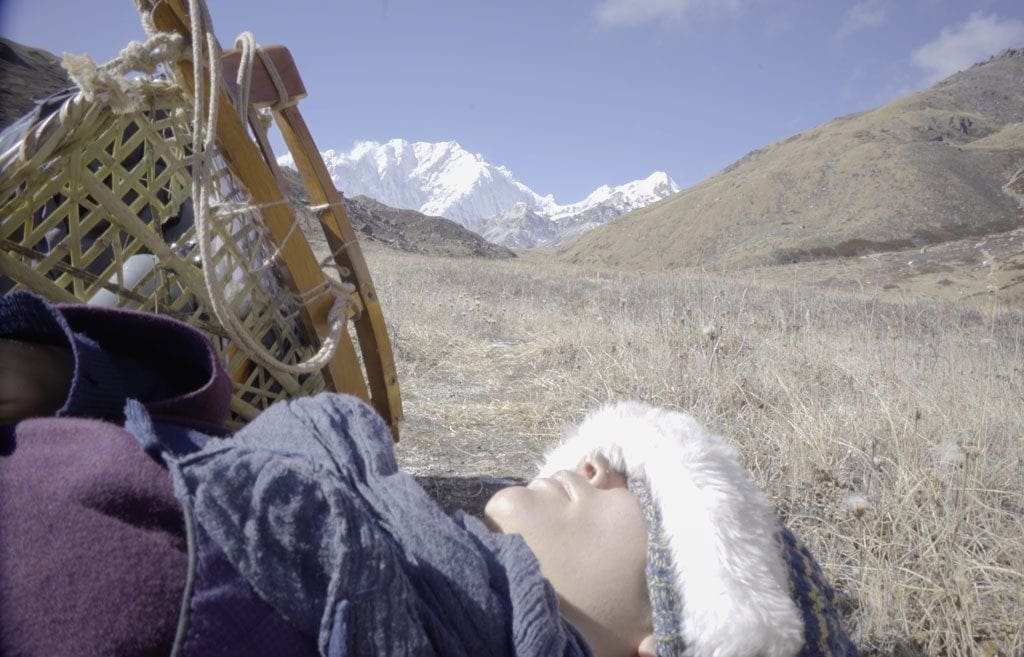
Do you have any other trips lined up?
Alexandra’s journey through Asia took her 14 years to complete. As you would imagine, travelling for 14 years just wasn’t a viable option for me. So, I decided to start at the very beginning of Alexandra’s journey. She travelled through seven countries on her epic journey so my plan is to follow her footsteps in stages, one big trek in each of the countries she went through, and I started with the place where she got her very first views of Tibet–Sikkim in northern India.
For the next leg of the journey, I would like to go with a larger group of women, all of us walking with homemade chairpacks and no modern day equipment. I think the Mongolian desert was her next stop.
If you wish to make a donation to Freedom Kit Bags, you can do so via Elise’s website: www.womanwithaltitude.com
Photos: by Emily Almond‐Barr.
